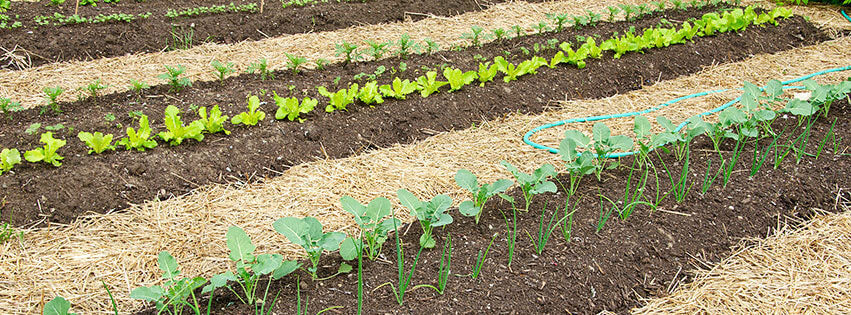Lawn is unsustainable. For all its demands of water and mowing energy, it gives nothing in return. Space that could be used for growing food, or even simple wildflowers, is dedicated instead to endlessly demanding, non-native grass. On a suburban cul de sac, there may be ten or more homes, each a sprinkler system for irrigation and each with at least one machine for manicuring lawn. Several of these households may also sprinkle their lawns with chemical fertilizers that wash into the broader environment.
So how can these spaces be converted into something worth caring for? Removing the sod by hand and replacing it with topsoil is very hard work. Most city landfills (including Vancouver’s) will not accept sod, so you would need to dispose of it on your own property. Clumps of sod can be stacked grass-side down, and this eventually kills the grass, but it takes a couple of years to break down the structure of the sod, and most often, the soil clinging to it is not very useful.

Build up by lasagna gardening.
Also referred to as no-dig gardening or the Ruth Stout’s Technique, the idea of layering instead of tilling, digging, or plowing came to this American woman in 1944 as she waited for the ploughman. Over the years she refined the minimalist approach and was known as the No-Dig Duchess. She lived to ninety-six years of age, presumably because of the nutrient rich soil her vegetables grew in. There are a few ideas of origin. Credit has also been given to Esther Deans, an Australian woman who used technique for the first time about the same time as Ruth Stout, and today is more than 100 years old. Japanese gardener Masanobu Fukuoka described the process in his book One Straw Revolution. He lived to the age of ninety-six.
How do you make a lasagna garden?
The process is easy. No need to remove existing sod or weeds. No need to dig or till. A simple layering of materials in a selected area for a garden, or in a boxed container, means you just have to gather enough green and brown materials before you begin. Use stakes or a garden hose to mark the designated area and make sure that you have enough room to reach the center of each lasagna garden.
1. Place brown corrugated cardboard or three layers of newspaper on the sod or the soil.
2. Water the cardboard or the newspaper (nothing glossy) – this kills the grass and weeds and attracts earthworms that will help till the soil you create.
3. Layer brown and green materials alternatively, using twice as much brown material. Be sure not to step on the layers or otherwise compress your lasagna garden. Alternate layers as you would in a compost pile.
Brown Materials (materials that add roughage)
Fall leaves
Hay
Straw (sometimes carries seeds)
Sawdust
Peat
Mulch
Wood ash from the fireplace
Compost
Soil (bagged soil from your local nursery)
Composted herbivore manure (rabbit, cow, horse)
Shredded newspaper and junk mail (again, nothing glossy)
Worm castings
Green (materials that fuel the composting process)
Vegetable scraps
Garden trimmings
Grass clippings that haven’t been exposed to pesticide and herbicides
Blood meal
Seaweed
Coffee grounds and paper filters
Tea leaves and tea bags
Keep layering until the lasagna bed is about two-feet tall. This will shrink in a matter of weeks. Maintain by adding mulch around the growing plants, and watering as needed.
When can you make a lasagna garden?
You can make a lasagna garden any time of the year, although fall is the preferred season as the amount of materials available at that time are abundant and free. As well, the lasagna garden can break down over winter and will be ready for spring planting of seeds or transplants.
If you make a lasagna garden in spring or summer, use peat or topsoil within the layers and as a finishing 4” layer so you can plant immediately. After a year or so of a lasagna garden, the beds will have a more stable soil structure than if you regularly loosened the soil.
What are the benefits of a lasagna garden?
Fewer weeds
Better water retention
Requires less fertilizer
Produces fluffy, nitrogen-rich soil
Produces chemical-free vegetables and herbs
Improved quality of harvests
Another way to build your soil up, over top of lawn, is to build raised beds in order to “frame” the soil. Raised beds have numerous advantages. They warm up earlier in the day, and earlier in the year that soil at ground level. They provide ample drainage, even in very wet weather. Read more about raised garden beds.
If you’re not ready to launch your farming career, but still want to replace your lawn with something less demanding, consider wildflowers. To plant a wildflower meadow, you need to start in early spring. Read more about planting wildflowers.

